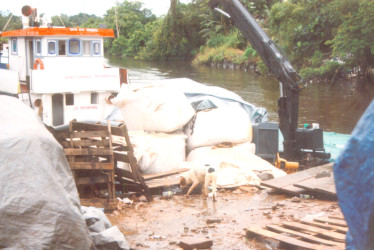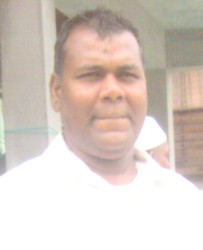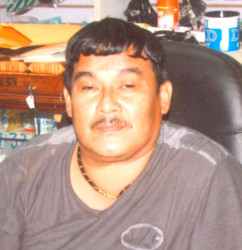Last weekend’s capsizing of the Capt Saif reflects the perils of our waterways, a critical means of connecting coastal Guyana with huge swathes of the country’s interior.

journey from Georgetown
It is no secret that the facilities that provide the services to distant parts of the country are Spartan. Some say that on the sides of both the authorities and the service providers there is often too little regard for maritime safety regulations.
When Stabroek Business tried to speak with the Director of Maritime Safety on Wednesday he was not available. We received no return call. By a twist of fate, however, this newspaper met two businessmen who lost cargo when the Capt Saif went down. Sometimes, as we learnt on this occasion, official media releases tell only part of the story.
One of the two men told us that long before the Capt Saif departed the Guyana Fertilizer Company Ltd Wharf immediately adjacent to the old Giftland building there had been arguments about whether or not the vessel might be overloaded. There were some who watched the vessel leave who were doubtful that it would make it to Port Kaituma.
We asked the two businessmen whether it is customary for Maritime Administra-tion (MARAD) officials to be on hand to make a safety-related assessment before a vessel departs. Neither of them appeared inclined to proffer a response. It is a question that we would have raised with the MARAD authorities if we could find any official who was willing to talk. There appears to have been little change in the disposition of public servants to going on record. Up to Wednesday, the Captain of the sunken vessel, too, was not answering his phone.
We were told too that there were further disagreements on board the vessel after it had left Georgetown and that some time before the vessel went down some of the cargo had been cast adrift in order to try to correct what, by then, had become an emergency.

Ishmael Farouk, one of the businessmen who had cargo aboard the stricken vessel told Stabroek Business that he believed what may have saved the crew’s lives was the fact that by the time the Capt Saif had begun to go into its death throes they had all fully prepared themselves for the worst.
By the time we spoke with Farouk on Tuesday he appeared to have already begun to recover from losses totalling around $6 million. The Capt Saif was taking mostly cooking gas to Port Kaituma for Farouk. He told Stabroek Business that he operates a fairly lucrative business supplying cooking gas to the community.
We talked briefly about possible loss recovery. Farouk was not optimistic. The business of moving cargo by sea from Georgetown to interior regions is fraught with risks associated with issues of the legality of some of the operations. Whether the goods on board some of these vessels are insured against eventualities like last Saturday’s mishap, is unclear.

Much of Farouk’s entrepreneurial pursuits are linked to the gold-mining industry. He owns and operates I&V Mining Company, an operation that fabricates parts for mining equipment. The fabrication operation takes place at Good Hope, East Coast Demerara. Farouk also runs a small shop on Garnett street Newtown, close to Vlissengen road that sells parts for mining equipment.
Time was when he ran his fabricating operation at Port Kaituma. However, high operating costs, including the costs associated with moving raw material from the coast forced the closure of that operation.
He has learnt the art of fabricating the parts without any formal training. His skills have been honed from his own familiarity with the mining sector. Manufacturing apart, he engages his customers, instructing them in the fitting and use of his fabricated substitutes which he says cost about 50 per cent less than the original parts.
Farouk believes that businesses like his own that supply parts for the mining industry should be allowed to thrive and that the way to do so is to ensure that taxes on Chinese imports are sufficiently high to afford locally produced parts a competitive advantage.
More recently, Farouk has become interested in the improvement of gold-recovery methods. He says that current methods usually recover no more than around 68 per cent of gold. Finding methods of improving gold-recovery levels is currently on Farouk’s radar.




